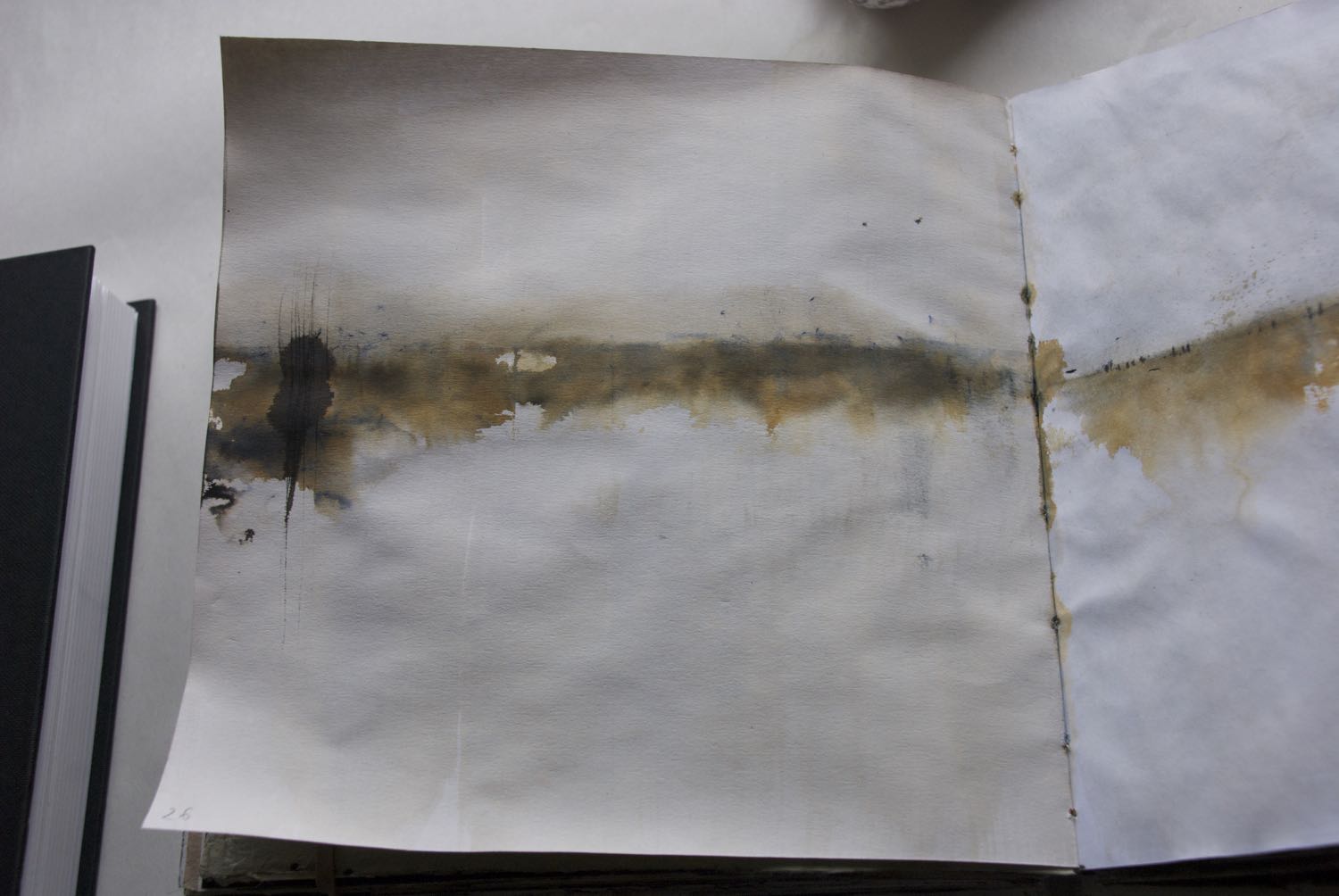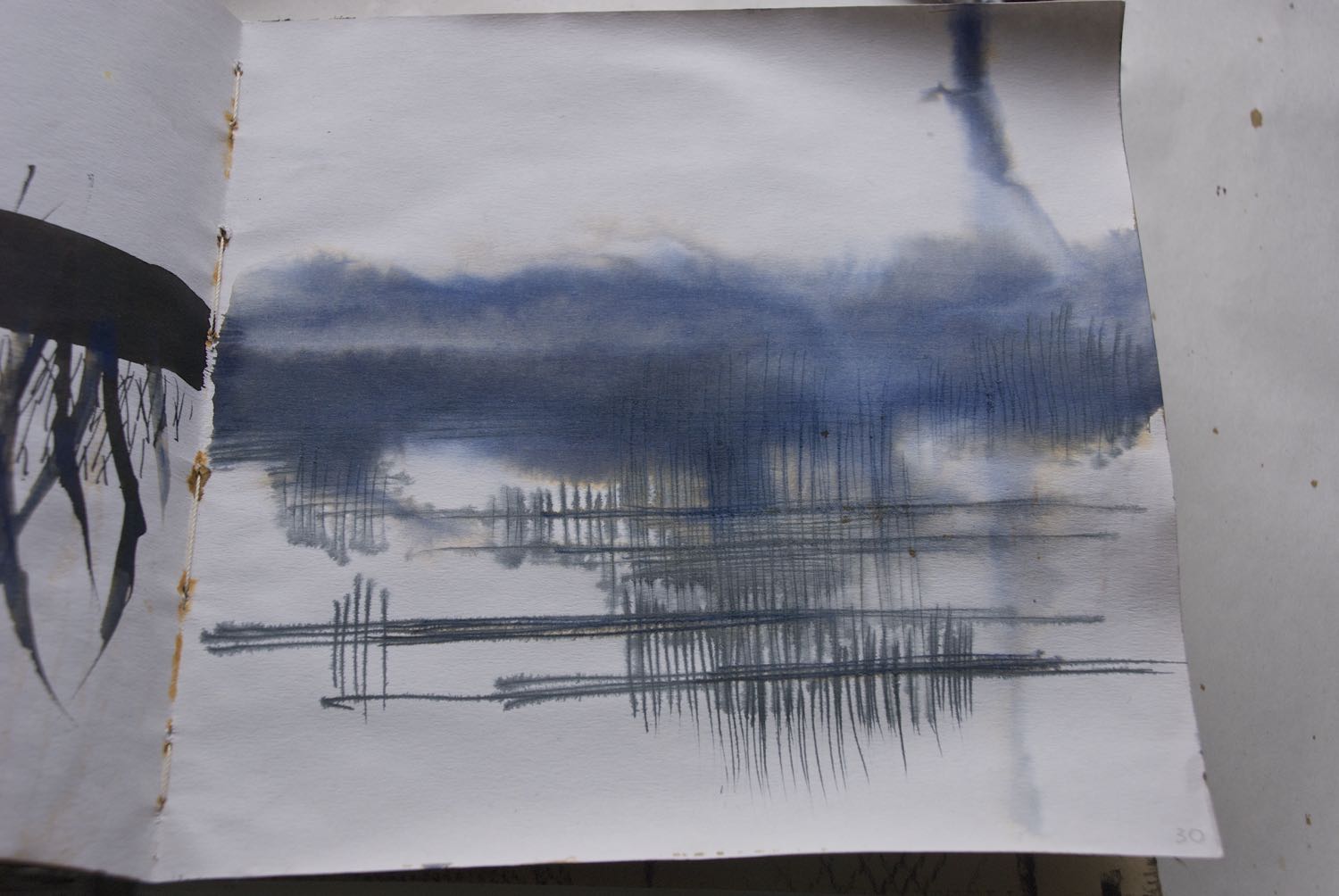So immediately after I finished the first forty days of mark-making, I started a second. And since by the end of the first I was working almost exclusively with conté crayon, I decided to switch to ink - my favourite wet medium. I chose another home-made sketchbook - a larger one this time (8 inches square) but, like the first, filled with a mixture of different types of paper. Same principle as before - a minimum of one page a day, any mark. And so I began again.
Then ... frustration! Nothing I did seemed to work out. After becoming really comfortable with the conté crayon all I seemed to get now were ugly, splodgy marks and puddles of ink on the page. And there was another problem. I had to wait for the ink to dry before I could turn the page! So not only did I not like what was happening but I couldn't move on and try something else straightaway.
One of my favourite studio rules is that whatever it is I'm doing - dyeing, drawing, collage - I set out to do at least 10 variations of it. This is because I often find that it's the 7th, 8th and 9th variations that are actually the best - the things I hadn't even thought of when I started. I like to work quickly and encourage the ideas to keep flowing from one sample or drawing to the next. And that's how I had been working during the first forty days ... and now I couldn't.
By the evening of day two (note the extent of my patience!) I was on the verge of running down to the studio and cutting a pile of loose sheets of paper to work on instead of using a book. I talked myself out of it. Partly because it was late and I was tired. But mainly because I reflected that if this was how it was to be, that was going to be part of the practice and I needed to adjust to that. It would mean slowing down and being more deliberate. Taking more time to consider what was happening before moving on.
The first week was painful. I was interested in bleed effects but kept using too much ink or too much water. So my marks would start out looking gorgeous and then degenerate into a splodgy mess. Oh yes, and the wet pages took ages to dry. I had to change my approach. Below are the most acceptable results from that week.
In week two I was placated by some good results from combining Indian ink or Sumi ink (both water-resistant) with the fountain pen inks I favour. There were some pleasing resist effects and contrasts in texture.
There was a sort of breakthrough around Day 16. I changed some of the tools I was using and tried new ways of applying the ink to the page and good things happened. I started to see some unexpected effects that I could get excited about. I also settled into a series of variations on horizontals cut by verticals, playing with different densities and line qualities. I recognise the inspiration of wetlands and reed beds and sometimes I emphasise it. The line between mark-making and drawing is a very thin one - at least in my case.
I had been using pieces of scrap paper as a mask - brushing or sponging ink off the edge - and around day 25 discovered I could mono print the dried ink from these scraps onto a damp page - gorgeous! I also experimented with adding torn pieces of masking tape, which takes the ink differently.
Today is Day 33. There are still "bad" pages - experiments that don't work out or where I have been careless or heavy-handed - but they don't bother me so much. Of course the whole experience has been entirely consistent with the underlying principle of my "rule of 10" - the value of pushing yourself beyond your initial idea in order to discover the thing you hadn't imagined. And the need to pay attention to what is happening and respond to it - change tools, change my approach.
With seven days to go I notice that I'm repeating myself more - recreating marks or effects that I like. Not a bad thing but I think one advantage of doing this practice in forty day blocks is the opportunity to change something each time, to stop it becoming habitual and keep it fresh. I have several ideas for the next 40 days ...
Karen Thiessen - who was one of those who inspired me to do this in the first place - wrote an update on her own mark-making practice and I was also interested in this.











